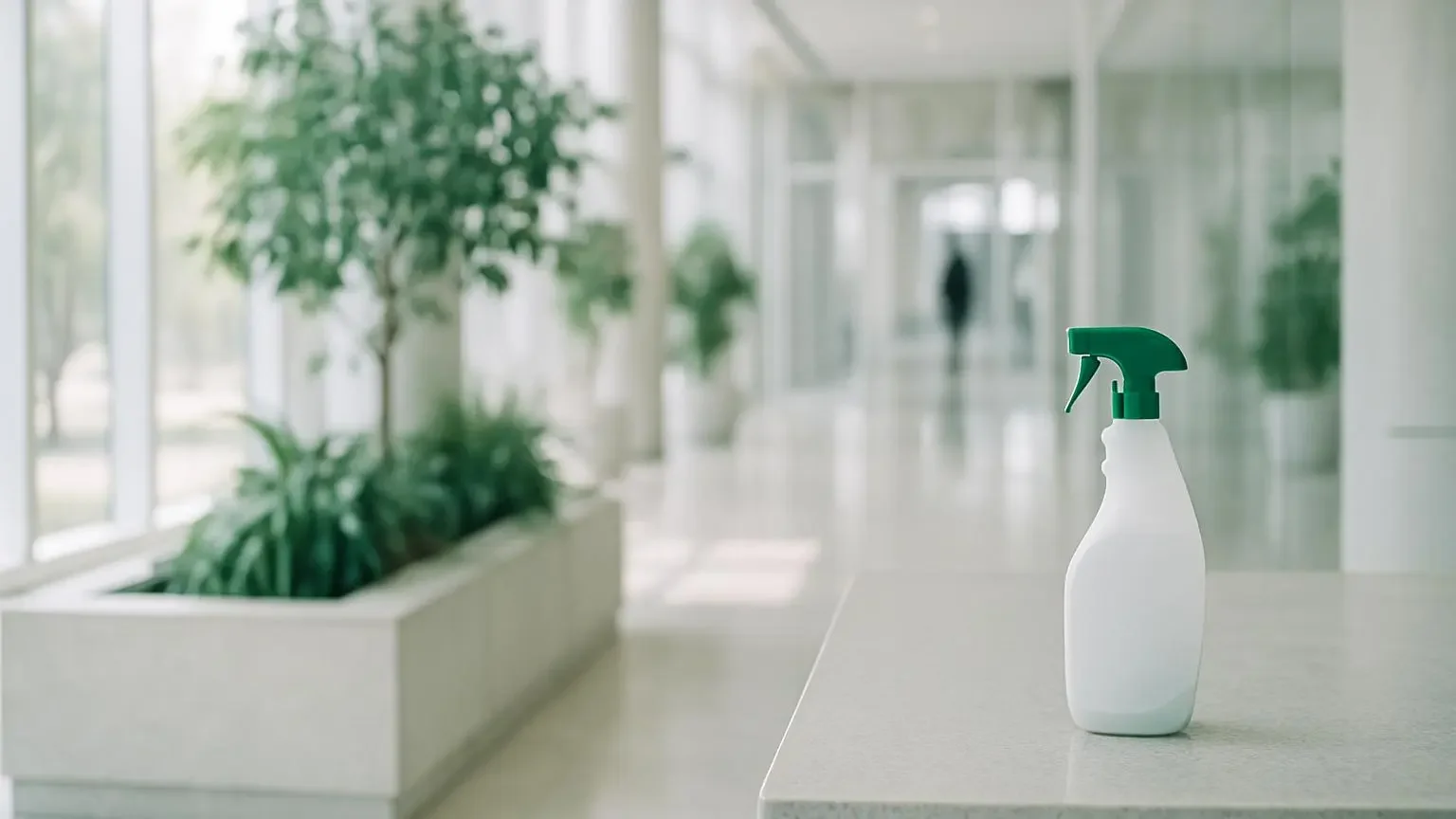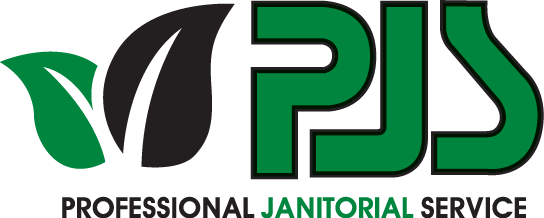What Are Green Cleaning Certifications and Why They Matter
 Green cleaning certifications are third-party endorsements showing that cleaning products or services meet strict environmental and health standards.
Green cleaning certifications are third-party endorsements showing that cleaning products or services meet strict environmental and health standards.
These certifications—like Green Seal, EPA Safer Choice, and ECOLOGO—confirm products are safer for people and less harmful to the environment.
For Houston facility managers, they mean your cleaning program isn’t just “eco-friendly” by label, but officially verified to support indoor air quality, safety, and regulatory requirements.
Choosing products or services with green cleaning certifications helps you meet sustainability goals, simplify compliance, and confidently communicate your commitment to healthier spaces.
Understand What Green Cleaning Certifications Really Mean
Facility managers want proof. Green cleaning certifications give you just that—a verified stamp that what you’re buying is safe, sustainable, and truly effective. These certifications are more than marketing terms. They’re evidence that your cleaning products, services, or programs have met strict, independent standards for health and environmental impact.
What Makes a Cleaning Product or Service “Certified Green”?
Not every product with a green label deserves your trust. Certification means a third-party authority has tested and approved every part of a product or process, including its toxicity, ingredients, lifecycle footprint, and safety results across the board.
Examples of trusted certifications:
- Green Seal: Multi-attribute standards that ban harsh chemicals and demand concentrated formulas, scored on toxicity, packaging, and manufacturing practices.
- EPA Safer Choice: Every ingredient is checked for environmental and human health impacts, not just the active ones. You get transparency—all ingredients disclosed.
- ECOLOGO: Considers everything from emissions and energy use to ingredient safety and packaging waste. Great for facilities aiming for broad, lifecycle-based sustainability.
- LEED: Goes beyond products. This program looks at your entire building’s cleaning process, routine, training, and reporting to gauge sustainability.
Certified programs don’t just meet labels—they create healthier workplaces. They prove your commitment with science-backed verification.
Green cleaning certifications are your audit-proof answer to questions on health, sustainability, and trust.
PJS of Houston Approach
We don’t just watch standards. We align every part of our cleaning program with the latest requirements from organizations like Green Seal and LEED. Our team uses certified products and follows protocols that keep your documentation strong for both internal audits and third-party review. If you want to demonstrate leadership on health and sustainability, you need verifiable compliance—no shortcuts, no guesswork.
Discover Why Green Cleaning Certifications Matter for Facilities
Adopting green-certified practices protects your people and your reputation. When you rely on certifications, you cut through greenwashing and set a clear benchmark for quality, performance, and indoor safety.
Clear Benefits Every Facility Manager Wants
Certification is not just for show. It creates measurable results that directly impact worker health, occupant safety, and your competitive standing.
- Fewer chemical hazards: Certified products often ban toxic ingredients like alkylphenol ethoxylates and high VOCs, reducing workplace exposure for custodians and occupants.
- Verified indoor air quality: By minimizing airborne irritants, certified programs lower the risk of asthma, allergies, and sick building symptoms—especially vital for schools and medical sites.
- Staff retention and well-being: Cleaners armed with less toxic products face fewer rashes, respiratory problems, or accidental spill incidents, leading to better morale and lower turnover.
- Compliance you can prove: Certifications help you meet government or client sustainability mandates, opening doors for more lucrative contracts and public sector bids.
- Differentiation: Facilities with certified programs stand out in RFP processes, giving managers an edge in retention and tenant satisfaction.
Your stakeholders demand transparency. Certified green cleaning lets you deliver, every day.
Occupant health, staff safety, and regulatory compliance all hinge on verified cleaning protocols—not guesswork or unproven claims.
Learn the Standards Behind Leading Green Cleaning Certifications
Knowing the core standards behind leading certifications reveals what separates real green cleaning from empty marketing. Each respected certifying organization uses detailed, science-backed criteria that cover health, sustainability, and operational reliability.
Standards That Shape the Industry
Every top certification has real teeth. Here’s what they require and how they’re enforced:
Key criteria in leading certifications:
- Ingredient screening: Every substance is checked for acute and chronic toxicity. EPA Safer Choice won’t certify any product with hidden hazards—transparency and safety are non-negotiable.
- Lifecycle impact: ECOLOGO and Green Seal go beyond usage. They score products on energy use, emissions, and end-of-life disposal.
- Performance testing: Certifications demand proof that products work. No trade-offs between green and clean.
- Worker safety: Organizations like Green Seal don’t just test bottles—they review ergonomic equipment standards and require that cleaning methods reduce back strain and repetitive injuries.
- Packaging and concentration: Minimum standards for concentrated formulas cut packaging waste, lower shipping loads, and boost sustainability metrics.
- Ongoing compliance: Random audits and renewal processes keep everyone honest. Certification is a continuous process, not a one-time deal.
Only products and programs that pass published, transparent standards—and ongoing audits—deserve your trust and investment.
You need criteria you can cite in your own reporting. Knowing these details helps you select the right vendors and justify every item in your procurement plan.
Examine How Certified Cleaning Impacts Health, Safety, and Productivity
Looking for real-world impact? Certified green cleaning isn’t just a nice-to-have. It produces hard data improvements for every category you manage: air quality, wellness, and satisfaction.
Proven Outcomes from Certified Cleaning Programs
When you switch to verified green cleaning, results follow.
- Lower rates of eye, skin, and respiratory complaints among staff and occupants, thanks to elimination of harsh chemicals.
- Fewer tenant complaints about air quality, reduced reports of headaches, and improved satisfaction scores in buildings using certified processes.
- Demonstrated reductions in absenteeism. In schools and healthcare, better air quality from green cleaning has been linked to improved student attendance and patient recovery times.
- Fewer workplace injuries among cleaning staff, because certified programs require ergonomic equipment and more comprehensive safety training.
- Tangible support for workplace wellness programs, providing clear documentation for LEED, WELL, and other health-driven building standards.
If you want lower risk, greater compliance, and real performance gains, certified green cleaning delivers proof—not just promises.
Your stakeholders expect visible results. Certified green programs put you, your team, and your building ahead, every single day.
Compare Key Green Cleaning Certification Labels—What to Look for
Sorting through labels can get confusing fast. Not all “green” stamps carry weight or mean the same thing. Houston facility managers need a clear system for separating the best from the rest.
The Labels That Actually Mean Something
Top certifications act as signposts. They don’t just look good—they demand real accountability from vendors and products.
Spot these trusted labels and know what they prove:
- Green Seal: Focuses on ingredient safety, concentrated formulas, and strict bans on known toxins. Great pick when you want broad, deep assurance across chemical, environmental, and performance factors.
- EPA Safer Choice: Entire formula reviewed for human health and environmental hazard—excellent for schools and spaces where children or sensitive populations are present.
- ECOLOGO: Benchmarks for product lifecycle, emissions, biodegradability, and packaging—a strong choice for facilities working toward HAACP, ISO, or other holistic certifications.
- USDA BioPreferred: Signals use of renewables. Shows commitment to products with minimal petroleum content—helpful for government clients aiming to hit procurement mandates.
- LEED Endorsements: Recognizes not just products but documented cleaning protocols, purchasing records, and staff training. Key for buildings seeking green building status.
Each of these signals genuine audit standards and transparent, science-backed testing. They outclass vague “eco” badges, which rarely guarantee much beyond basic regulatory compliance.
Look for logos from third-party certifiers, not just manufacturers or retailers.
Watch for Pitfalls
Some products parade eco-friendly claims with little to no independent verification. Always:
- Verify the certifying agency—should be public, independent, and transparent about methods.
- Check for published standard details—if you can’t find out what was tested, don’t trust the label.
- Beware of vague terms like “eco-safe” or “natural.” Trust only what’s backed by robust, public protocols and periodic review.
Explore the Business Case for Certified Green Cleaning in Houston Facilities
Adopting certified cleaning isn’t just about compliance. It builds a powerful case for operational excellence, liability protection, and business growth—especially for organizations in Houston’s fast-moving commercial landscape.
The Local, Measurable Competitive Edge
Houston’s facility managers balance cost, risk, and stakeholder trust. Certified cleaning brings real returns.
- Documented compliance with local government purchasing and environmental standards, making it easier to win public and contract work.
- Greater client retention, as tenants and organizations increasingly require sustainability metrics for lease or vendor approval.
- Lowered insurance premiums and legal risks, since certifications are recognized by regulatory authorities as proof you’re meeting occupational and environmental health laws.
- Tangible cost savings from reduced sick days, lower turnover among cleaning teams, less asset damage, and longer-lasting equipment—all from using gentler, science-backed products.
- Clearer paths to grants or incentive programs tied to sustainable operations or green building initiatives.
With nearly three decades serving Houston facilities, PJS of Houston advances your ESG goals, meets stringent documentation requirements, and keeps you ahead of contract demands—all while protecting the well-being of your people and property.
Every certified process you implement is another shield against risk—legal, financial, and operational.
Uncover How to Implement Green Cleaning Certifications in Your Facility
You don’t need to guess or hope your program is “green enough.” Implementation can be precise, stepwise, and built for real results.
Your Roadmap to Green Cleaning Certification
Start strong and get your bases covered using this action-driven plan:
- Audit your current products, equipment, and cleaning policies. Identify gaps in both compliance and documentation.
- Choose products and suppliers who hold certifications recognized by your stakeholders and local authorities.
- Update policies and procedures to require the use of certified products and environmentally responsible routines.
- Train staff regularly—not just on what to use, but why certified protocols matter. Make certification status a visible point of pride and accountability.
- Monitor and document every cleaning process for internal review and third-party audit. Keep proof ready for RFPs or regulatory checks.
- Schedule annual reviews with your janitorial partner, keeping your system sharp and up-to-date with changing standards.
Checklists, clear documentation, and staff engagement keep your program audit-ready and effective.
Consistent action, clear training, and tight documentation are your tickets to lasting, visible results.
Address Common Questions About Green Cleaning Certifications
Facility managers have real-world concerns. Costs, performance, and compliance questions all deserve straight answers.
Quick Answers for Decision-Makers
- Do certified products work as well? Yes. Modern certified cleaners meet or exceed the performance of conventional ones—look for documented test results or client testimonials.
- Is this going to cost me more? Upfront costs can be slightly higher. Over time, expect savings from reduced sick leave, fewer worker injuries, and lower equipment repair.
- Do certifications expire? Most require regular renewal—usually annual or biannual—with updated documentation and possible retesting.
- Can we combine certifications with LEED or WELL? Absolutely. Cleaning certifications support broader building sustainability goals and provide required evidence for green building credits.
- Do they fit medical or industrial settings? Yes. Leading certifications offer versions tailored to specific industries and risk profiles.
Certification is about value, not just compliance—it futureproofs your facilities and builds trust with every audit.
Conclusion: Elevate Your Facility with Green Cleaning Certifications
Green cleaning certifications position your facility as safer, healthier, and future-ready. These badges are not just for audits—they boost reputation, support tenant health, and lower operational risks.
Now is the time to rethink your cleaning practices. Use certifications as your framework for excellence.
If you want help transforming your Houston facility with green cleaning that gets results, reach out and let’s talk about what certified success looks like for your team.
